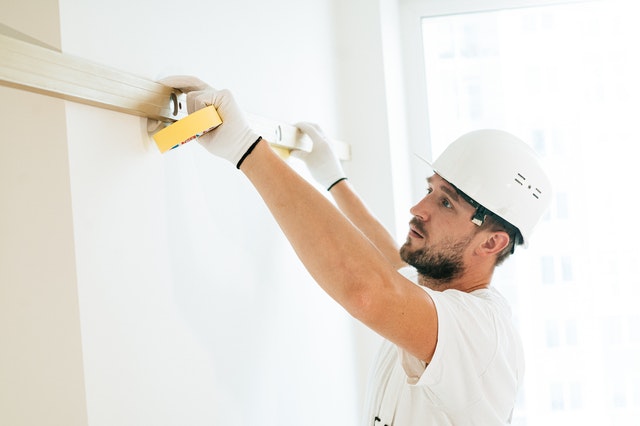For many years, builders have used building materials made of plaster. Plaster is made by placing layers of wet concrete over wooden strips, and then it dries to form a wall. However, it is a time-consuming and demanding process, and it may also require several coats to be applied with a longer drying time between every coat.
Luckily walls that would take weeks to form with plaster can be complete in days with drywall. Drywall is a building material that works similarly to plaster, and it goes by other names, including gypsum board, wallboard, and sheetrock. It is commonly used to create internal walls and ceilings and is also used to enhance other aspects of the building.
Table of Contents
Types of drywall
Drywall comes in the form of sheets or gypsum plaster covered with paper. Builders fasten the sheets to the building frames using adhesives, screws, and nails, and the sheets can also be connected using tape. From fast to easy installation, drywall has many benefits in the construction process, which is why it is popular in residential, commercial, and industrial constructions.
Regular drywall
Regular drywall, commonly known as a whiteboard, is the most widely used on walls and ceilings. It is available in 4by8 sheet size, but lengths up to 16inches are available for high ceilings.
Acoustical drywall
Also known as soundproof drywall, acoustical drywall has soundproofing properties. It has additional wood fibers, polymers, and gypsum to boost the soundproofing properties more than the regular drywall.Visit this website to learn more about soundproof drywall.
Mold resistant drywall
This one is manufactured with thicker paper backing than regular drywall and extra moisture resistance. If your building is prone to moisture, you should opt for moisture-resistant or mold-resistant drywall.
Fire-resistant drywall
Fire-resistant drywall is commonly used in kitchens, garages, and basements. You can also use it in several layers to achieve the level of fire protection you need or ceilings to keep them from collapsing during a fire.
VOC absorbing drywall
Volatile organic compounds are chemicals we should avoid daily. They come from cleaning agents and other building materials. VOC absorbing drywalls attract these chemicals and keep them inactive, providing a healthier living environment.
Pros of drywall
There are so many advantages of drywall which is why it is a popular building material. They include:
- There are various types and sizes to choose from.
- It is more stable than plaster.
- It is fast and easier to install.
- You can select fire-resistant drywall for advanced fire resistance.
- Acoustical drywall offers soundproofing properties.
- It provides temperature insulation.
- Drywall doesn’t require sanding.
- It can be painted over.
- It is easier to repair if any damages occur.
Uses of drywall
Drywall can be used as the primary material for wall and ceiling constructions. But it has become popular building material for enhancing interior construction designs. Builders use it to create arch openings, shelves, room partitions, ceiling coffers, and false ceilings.
Conclusion
Drywall is easily removable, making it easier to redecorate your home whenever you feel like it. It is readily available and is faster to create than plaster which explains why it is so popular.

